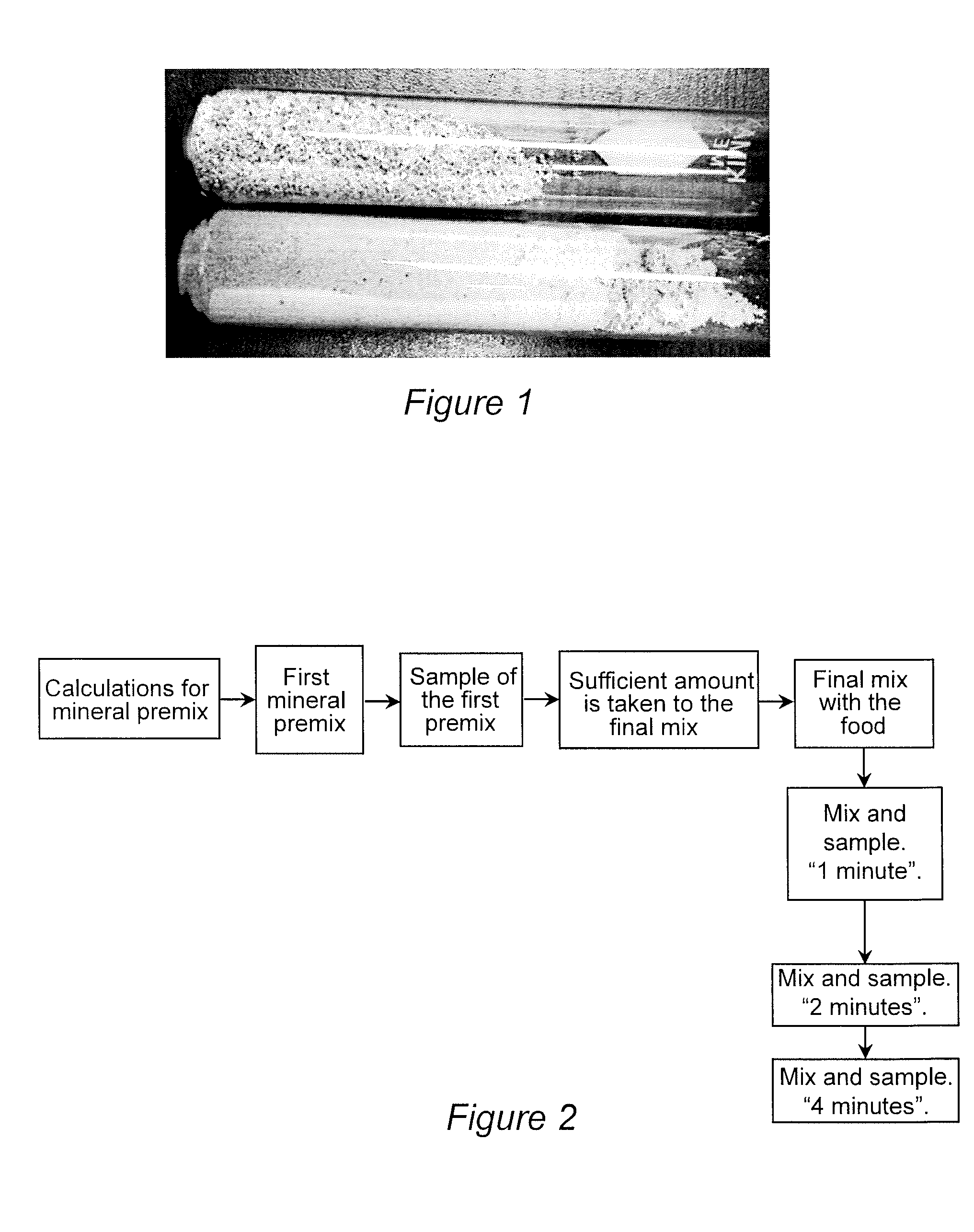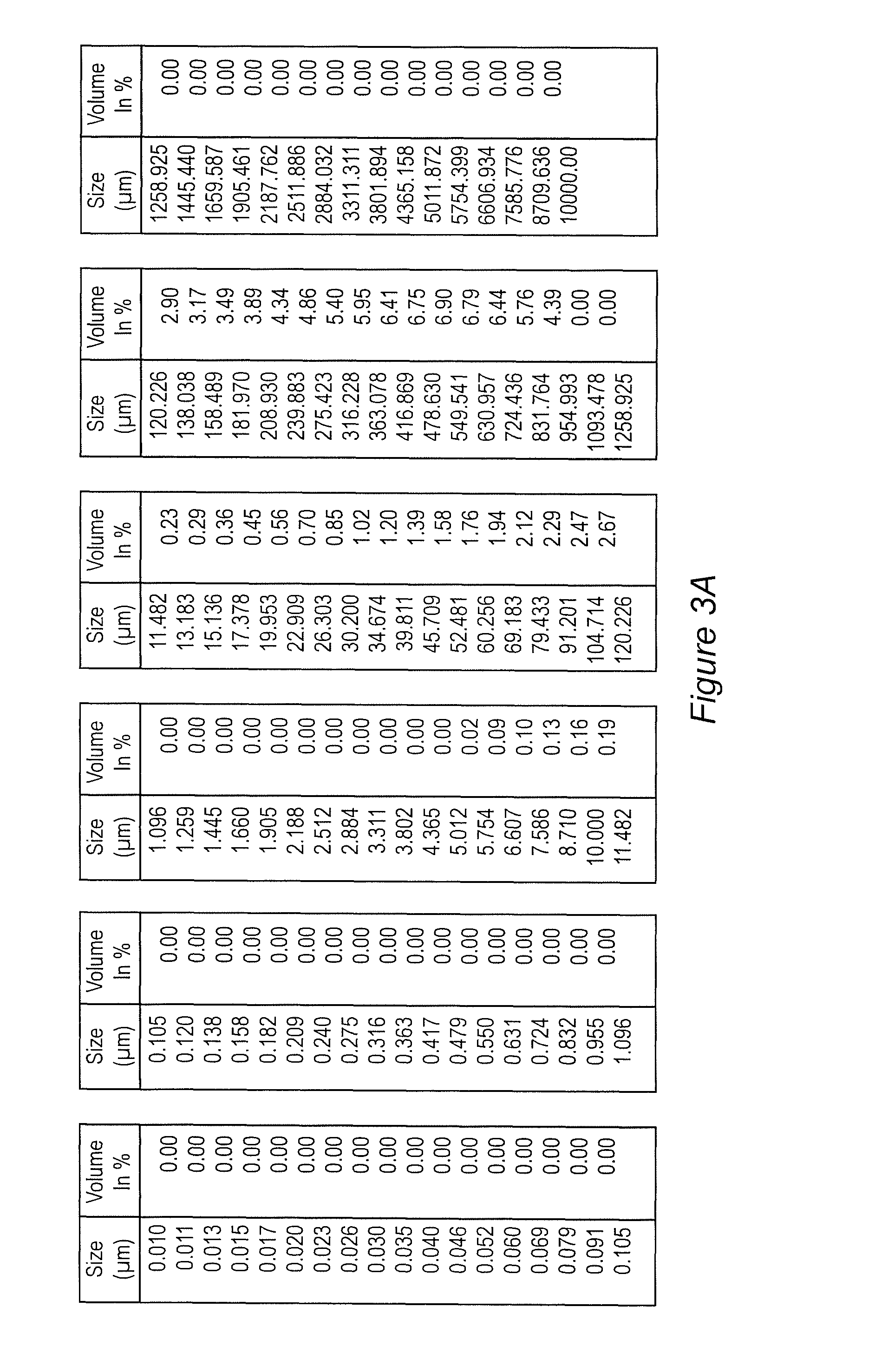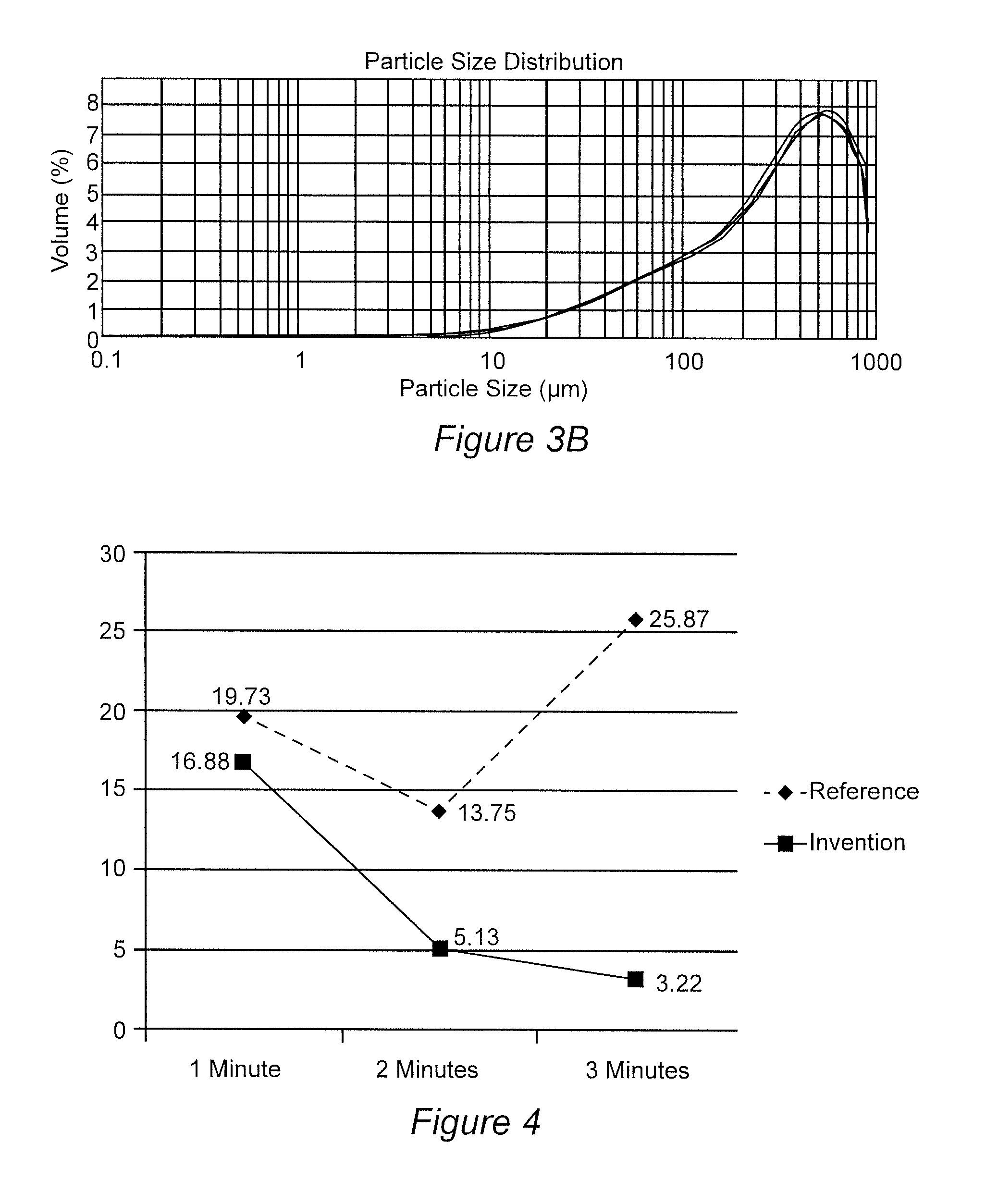Pre-mix composition for cattle
a technology for pre-mixing and composition, applied in the field of pre-mixing animals, can solve the problems of difficult homogenization of blends, difficulty in obtaining homogeneous mixes, and lack of homogeneity of premixes
- Summary
- Abstract
- Description
- Claims
- Application Information
AI Technical Summary
Benefits of technology
Problems solved by technology
Method used
Image
Examples
example 1
Preparation of the Premix Composition
[0105]In an horizontal mixer, 210 Kg of corn cobs were added along with 12.06 Kg of Zilpaterol HCl, and the mixing process was started, during 10 minutes, once a proper visual uniformity was reached. 25 Kg of Polyoxyl 35 were added by spraying over the premix, while the mixer is running. Then the mixing process was stopped and the appearance of the premix was checked, once approved, the mixer was started again, and 3.8 Kg of corn cob was added to fit with the desired batch size.
[0106]Once verified the aspect of the premix, it was sampled and bottled in 5 Kg bags.
[0107]FIG. 1 shows the visual aspect of the premix composition such as obtained (lower tube), compared to the commercially available ZILMAX® (upper tube). The premix composition of the invention presents particles of small size, although the commercially available premix has bigger particles.
[0108]FIG. 2 presents the process of preparation, as described above, and the sampling to test the...
example 2
First Step of Blending with a Mineral Powder
[0113]Using samples from the premix composition prepared as presented in example 1, a mixing test was made, comparing the formula of this invention with the formula of a commercial beta-agonist ZILMAX®, during the mixing process in an horizontal blender, mixing Zilpaterol HCl premixes with mineral salts.
[0114]84 g of the premix were mixed with 19.916 kg of a mineral mix, in a Lodige mixer with a working capacity of 30 kg.
[0115]4 samples in different points of the blender were taken at 1, 2 or 3 minutes.
[0116]Surprisingly, the premix of example 1 gave quite better results than the referenced product, measured as Variation Coefficient, as expressed in the graphic shown in FIG. 4.
[0117]Variation coefficient is obtained by the following formula:
VC=Standard Deviation of samples concentration×100 / average of samples concentration
[0118]“Samples concentration” designates the concentration of Zilpaterol HCl, obtained when performing a UPLC analysis ...
example 3
Second Step of Blending with Food
[0120]20 kg of the mineral powder loaded with premix compositions were mixed with 280 kg of food.
[0121]Three samples in different points of the blender were taken at 1, 2 or 4 minutes. The coefficient of variation was measured as shown above, and results are shown in FIGS. 5A and 5B; it appears that after one or two minutes of mixing, the final mixes have comparable qualities—40% then 20% of coefficient of variation. However, after four minutes of mixing, the final mix composed of food and premix of example 1 reaches a coefficient of variation of 10% only, although the final mix composed of food and ZILMAX® presents a coefficient of variation of 40%.
PUM
| Property | Measurement | Unit |
|---|---|---|
| size | aaaaa | aaaaa |
| size | aaaaa | aaaaa |
| size | aaaaa | aaaaa |
Abstract
Description
Claims
Application Information
 Login to View More
Login to View More - R&D
- Intellectual Property
- Life Sciences
- Materials
- Tech Scout
- Unparalleled Data Quality
- Higher Quality Content
- 60% Fewer Hallucinations
Browse by: Latest US Patents, China's latest patents, Technical Efficacy Thesaurus, Application Domain, Technology Topic, Popular Technical Reports.
© 2025 PatSnap. All rights reserved.Legal|Privacy policy|Modern Slavery Act Transparency Statement|Sitemap|About US| Contact US: help@patsnap.com



